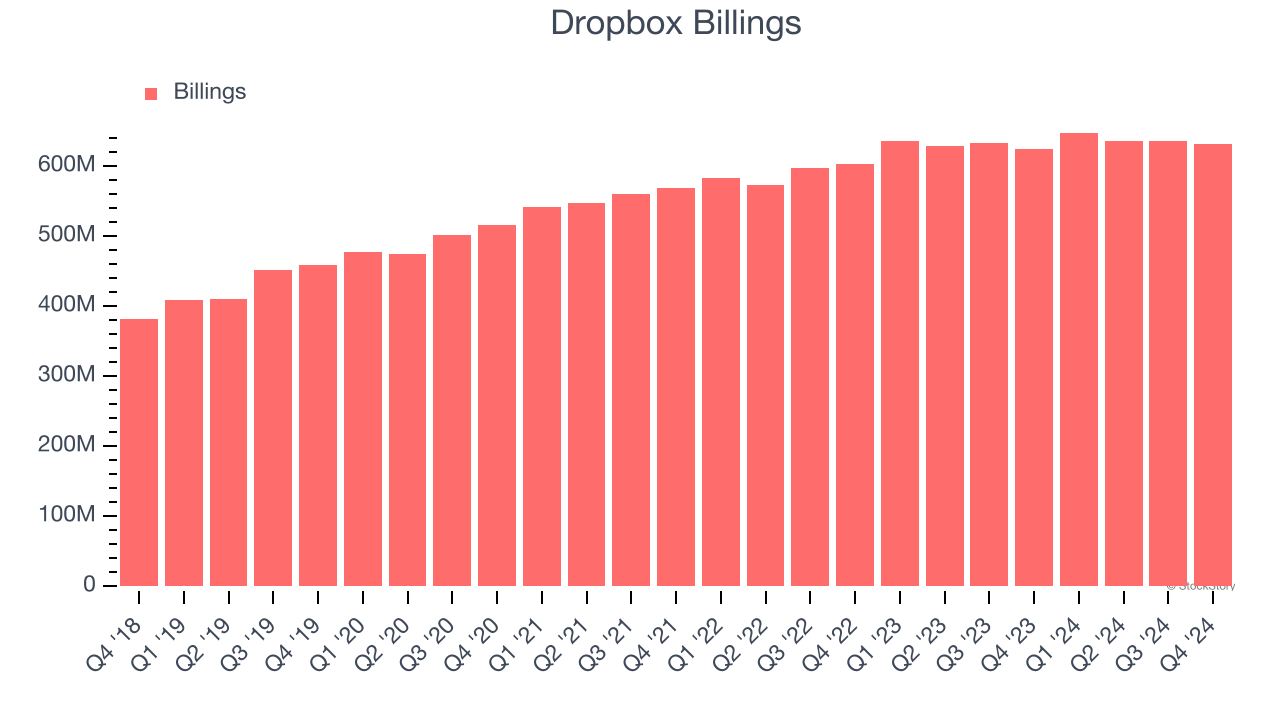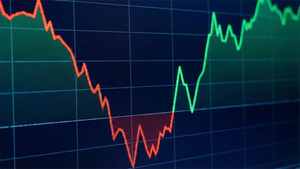
Since October 2024, Dropbox has been in a holding pattern, posting a small loss of 4.5% while floating around $24.15. However, the stock is beating the S&P 500’s 14.2% decline during that period.
Is now the time to buy Dropbox, or should you be careful about including it in your portfolio? Get the full breakdown from our expert analysts, it’s free.
Despite the relative momentum, we're cautious about Dropbox. Here are three reasons why you should be careful with DBX and a stock we'd rather own.
Why Is Dropbox Not Exciting?
Founded by the long-serving CEO Drew Houston and Arash Ferdowsi in 2007, Dropbox (NASDAQ: DBX) provides a file hosting cloud platform that helps organizations collaborate and share documents.
1. Weak Billings Point to Soft Demand
Billings is a non-GAAP metric that is often called “cash revenue” because it shows how much money the company has collected from customers in a certain period. This is different from revenue, which must be recognized in pieces over the length of a contract.
Dropbox’s billings came in at $631.5 million in Q4, and over the last four quarters, its year-on-year growth averaged 1.1%. This performance was underwhelming and suggests that increasing competition is causing challenges in acquiring/retaining customers. 
2. Revenue Projections Show Stormy Skies Ahead
Forecasted revenues by Wall Street analysts signal a company’s potential. Predictions may not always be accurate, but accelerating growth typically boosts valuation multiples and stock prices while slowing growth does the opposite.
Over the next 12 months, sell-side analysts expect Dropbox’s revenue to drop by 2.8%, a decrease from its 5.7% annualized growth for the past three years. This projection is underwhelming and suggests its products and services will face some demand challenges.
3. Shrinking Operating Margin
Many software businesses adjust their profits for stock-based compensation (SBC), but we prioritize GAAP operating margin because SBC is a real expense used to attract and retain engineering and sales talent. This metric shows how much revenue remains after accounting for all core expenses – everything from the cost of goods sold to sales and R&D.
Analyzing the trend in its profitability, Dropbox’s operating margin decreased by 2.5 percentage points over the last year. This raises questions about the company’s expense base because its revenue growth should have given it leverage on its fixed costs, resulting in better economies of scale and profitability. Its operating margin for the trailing 12 months was 19.1%.

Final Judgment
Dropbox isn’t a terrible business, but it doesn’t pass our quality test. Following its recent outperformance in a weaker market environment, the stock trades at 3.2× forward price-to-sales (or $24.15 per share). Beauty is in the eye of the beholder, but we don’t really see a big opportunity at the moment. We're fairly confident there are better investments elsewhere. Let us point you toward one of our top software and edge computing picks.
Stocks We Would Buy Instead of Dropbox
The market surged in 2024 and reached record highs after Donald Trump’s presidential victory in November, but questions about new economic policies are adding much uncertainty for 2025.
While the crowd speculates what might happen next, we’re homing in on the companies that can succeed regardless of the political or macroeconomic environment. Put yourself in the driver’s seat and build a durable portfolio by checking out our Top 6 Stocks for this week. This is a curated list of our High Quality stocks that have generated a market-beating return of 175% over the last five years.
Stocks that made our list in 2019 include now familiar names such as Nvidia (+2,183% between December 2019 and December 2024) as well as under-the-radar businesses like Comfort Systems (+751% five-year return). Find your next big winner with StockStory today for free.






